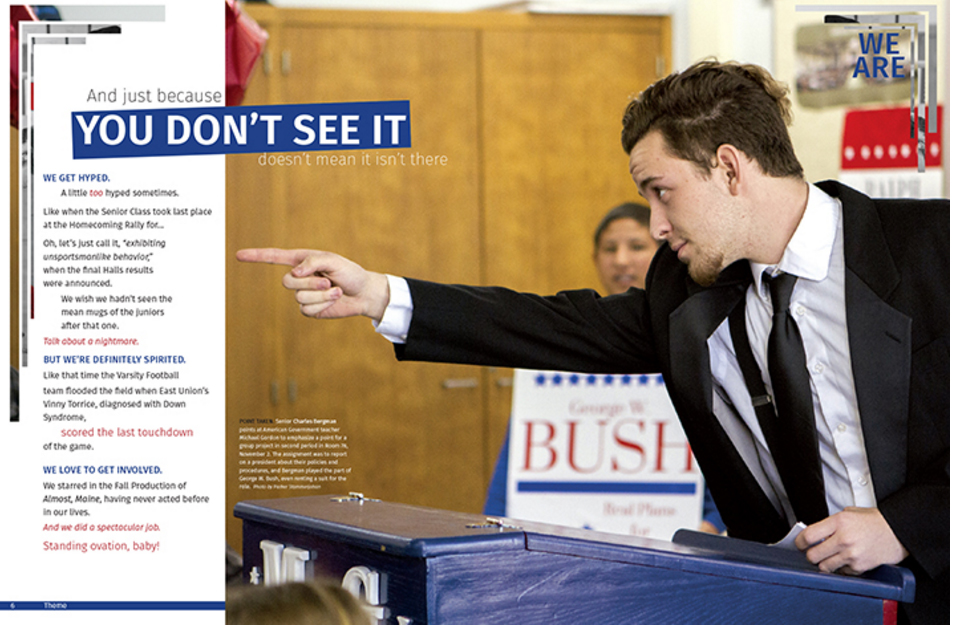Strong theme copy helps introduce your unifying concept to your readers. Learn some tips and tricks for creating the optimal copy.
Good leads begin stories. Bad leads can finish them. If the first couple of sentences don’t make the reader feel helplessly curious and compelled to continue, your body copy won’t be read. Yearbook leads don’t sum up the entire article like newspaper leads. Instead, they give the reader a tempting taste of what lies ahead without necessarily addressing the main point of the story. They can tease, mislead, startle, amuse – anything that will invoke the reader’s curiosity. Study the following types of leads. Learn to write more creative and effective leads – leads that are real attention-getters.
The sports section of your yearbook will be some of the most fertile ground for interesting feature stories. Are you currently stuck and looking for sports story ideas?
Take a look at the list below and see if you can find a sports feature idea that makes sense for your school and applies to your yearbook.
Rewriting is the secret to good writing. Embrace it, and you will produce final drafts of interest. Reject it, and you will limit your writing to mediocrity.
When rewriting, read the story aloud so you can hear the tone and inflection of your work. Awkward working usually screams at you during this recital. It’s also good to have a friend read your story. Don’t hesitate to obtain objective opinions.
The old saying goes, “A picture is worth a thousand words.” However, without a caption, readers may get a thousand different messages from a picture-and all of those messages may be wrong.
Story leads work much like ice cream toppings. They draw attention to the subject, making it more attractive, imparting a distinct “flavor” or “personality.”
Leads can inspire. They can question. They can shock, tickle, tease or entertain. But what is their ultimate purpose? Working together with headlines, designs and photographs, leads invite readers to come inside, kick off their shoes and stay for awhile. Good leads should not just grab attention; they should also harmonize with the tone or attitude of the copy. Even the cleverest lead, however, cannot salvage a poorly written story. A punchy lead followed by a boring story is a letdown. Instead, that same lead should pull the reader into a fabulous story that deserves to be read. All of the elements need to function together to make a meaningful presentation.




